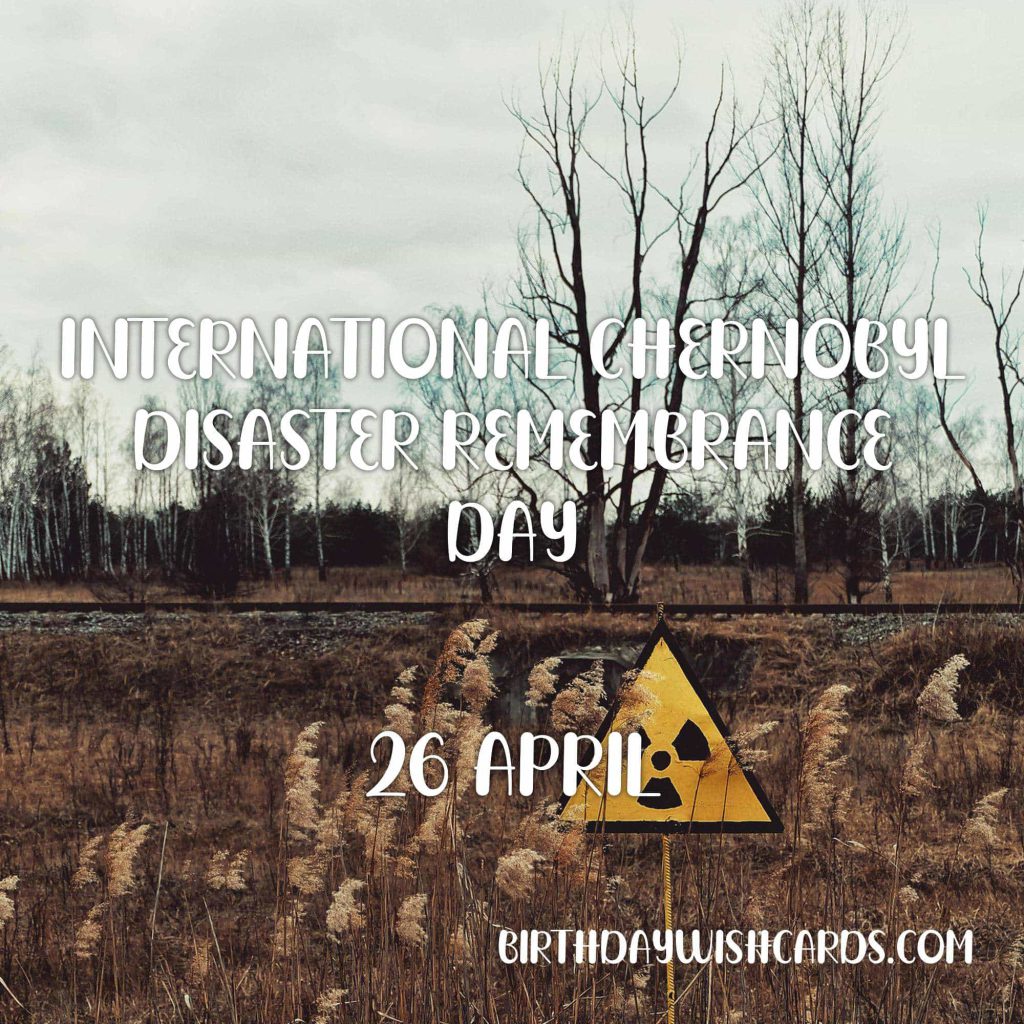
26 April: International Chernobyl Disaster Remembrance Day
On April 26, 1986, a catastrophic explosion at the Chernobyl Nuclear Power Plant released massive amounts of radioactive contamination across vast regions of the former Soviet Union. The most severely affected areas included parts of Belarus, Ukraine, and the Russian Federation. Nearly 8.4 million people in these three countries were exposed to hazardous levels of radiation, making Chernobyl one of the most devastating nuclear disasters in history.
It was not until 1990 that the Soviet government acknowledged the need for international support to address the aftermath. That year, the United Nations General Assembly adopted resolution 45/190, calling for global cooperation to mitigate the effects of the Chernobyl accident. This resolution marked the beginning of the UN’s extensive involvement in recovery and rehabilitation efforts.
To coordinate international aid, an Inter-Agency Task Force was established to develop collaborative strategies for managing the crisis. In 1991, the United Nations created the Chernobyl Trust Fund, now managed by the Office for the Coordination of Humanitarian Affairs (OCHA). Since the disaster, UN agencies and major non-governmental organizations have launched more than 230 research and assistance initiatives. These projects span health care, nuclear safety, environmental restoration, food safety, and public information campaigns.
Background
The Chernobyl disaster occurred during a routine test of the reactor’s safety systems on April 26, 1986. Intended as a brief, 20-second shutdown to test electrical equipment, the procedure quickly spiraled out of control. After just seven seconds, a sudden surge triggered a chemical explosion, releasing approximately 520 dangerous radionuclides into the environment.
The explosion’s force spread radioactive contamination over large portions of the Soviet Union, specifically in what are now Belarus, Ukraine, and Russia. Official records show that 31 people died immediately from the blast and acute radiation sickness. Additionally, around 600,000 emergency workers—including firefighters, plant operators, and cleanup crews—were exposed to high doses of radiation while containing the disaster.
An estimated 8.4 million people in the affected countries were subjected to varying levels of radiation exposure—comparable to the population of Austria. Approximately 155,000 square kilometers of land were contaminated, an area about half the size of Italy. Agricultural lands totaling nearly 52,000 square kilometers—larger than Denmark—were polluted with long-lived radioactive isotopes such as cesium-137 and strontium-90, with half-lives of 30 and 28 years, respectively.
Following the incident, about 404,000 people were permanently resettled to safer areas. However, millions continued to live in contaminated zones, facing ongoing exposure to residual radiation, which has caused a range of adverse health and environmental effects over the decades.
Long-Term Impact and Recovery Efforts
The effects of the Chernobyl disaster have persisted for decades, profoundly impacting public health, the environment, and socioeconomic conditions. Radiation exposure has been linked to increased rates of cancer, particularly thyroid cancer, among affected populations. The disaster also disrupted local ecosystems; yet, notably, some wildlife has gradually returned to the exclusion zone, which remains largely uninhabited by humans.
The international community continues to support recovery and research. The International Atomic Energy Agency (IAEA) plays a pivotal role in monitoring nuclear safety and advancing remediation technologies, helping to prevent future nuclear incidents and manage ongoing challenges at the Chernobyl site.
The United Nations Development Programme (UNDP) has also been instrumental in funding sustainable development and health programs in affected regions. These projects aim to improve living conditions, promote environmental rehabilitation, and support vulnerable communities. For more information on the UN’s efforts and Chernobyl’s legacy, visit the United Nations official Chernobyl page.
Commemorating International Chernobyl Disaster Remembrance Day
Each year on April 26, International Chernobyl Disaster Remembrance Day is observed worldwide to honor the victims and raise awareness about nuclear safety. This day serves as a solemn reminder of the devastating consequences of nuclear accidents and underscores the importance of global cooperation in nuclear risk management.
Commemorative events include memorial services, educational programs, and public discussions that highlight the lessons learned from Chernobyl. Governments, NGOs, and affected communities participate in activities aimed at promoting a culture of nuclear safety and supporting ongoing recovery initiatives.
Lessons Learned and Future Outlook
The Chernobyl disaster fundamentally changed the world’s approach to nuclear energy and safety. It exposed critical vulnerabilities in reactor design, emergency preparedness, and government transparency. Since then, international standards and protocols have been significantly strengthened to reduce the risk of similar catastrophes.
Ongoing investments in research and technology continue to improve nuclear power plant safety and environmental protection. The development of new reactor designs, enhanced monitoring systems, and improved emergency response strategies are all direct outcomes influenced by the Chernobyl experience.
Looking ahead, continued vigilance, international collaboration, and public education are essential to prevent future nuclear disasters. The resilience and recovery of communities affected by Chernobyl also offer valuable insights into managing the long-term consequences of environmental and technological crises.
Conclusion
International Chernobyl Disaster Remembrance Day on April 26 is a vital occasion to reflect on one of history’s most severe nuclear disasters. It highlights the human and environmental toll of the Chernobyl accident and emphasizes the ongoing need for global cooperation in nuclear safety and disaster response.
By remembering the past and supporting ongoing recovery, the world can strive toward a safer nuclear future—minimizing risks and protecting generations to come.




